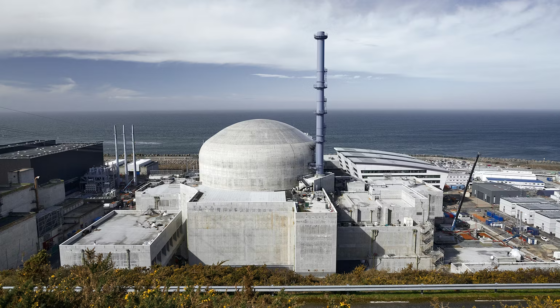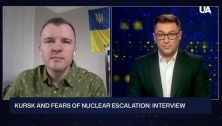Nuclear power, a cornerstone of Pakistan's energy strategy, holds the promise of addressing the country's chronic energy shortages while offering a...
Vous n'êtes pas connecté
- English
- Français
- عربي
- Español
- Deutsch
- Português
- русский язык
- Català
- Italiano
- Nederlands, Vlaams
- Norsk
- فارسی
- বাংলা
- اردو
- Azərbaycan dili
- Bahasa Indonesia
- Հայերեն
- Ελληνικά
- Bosanski jezik
- українська мова
- Íslenska
- Türkmen, Түркмен
- Türkçe
- Shqip
- Eesti keel
- magyar
- Қазақ тілі
- Kalaallisut ; kalaallit oqaasii
- Lietuvių kalba
- Latviešu valoda
- македонски јазик
- Монгол
- Bahasa Melayu ; بهاس ملايو
- ဗမာစာ
- Slovenščina
- тоҷикӣ ; toğikī ; تاجیکی
- ไทย
- O'zbek ; Ўзбек ; أۇزبېك
- Tiếng Việt
- ភាសាខ្មែរ
- རྫོང་ཁ
- Soomaaliga ; af Soomaali
Rubriques :
 Maroc - EURASIAREVIEW.COM - A la une - 06/Aug 19:17
Maroc - EURASIAREVIEW.COM - A la une - 06/Aug 19:17
Bharat’s Nuclear Revolution: Small Reactors, Big Impact – Analysis
While presenting the Union Budget for 2024-’25, Finance Minister Nirmala Sitharaman announced that the government would collaborate with private companies to develop Small Modular Reactors (SMRs). She mentioned that nuclear energy would be an important part of India’s energy plans for a developed nation, called Viksit Bharat. The government would work with the private sector to set up Bharat Small Modular Reactors and to research and develop new nuclear energy technologies, she said, adding that the government was planning to offer incentives for developing SMRs to boost nuclear power generation in the country. Future of Affordable, Safe N-Power The nuclear power industry is changing direction. Instead of focusing on very large and expensive projects, it is now turning towards smaller and more affordable options. Due to the global climate crisis and the urgent need to reduce reliance on fossil fuels, nuclear energy and renewable sources are receiving renewed attention as important solutions. Leading this change are SMRs, a new technology that offers a cheaper way to produce power compared to traditional nuclear plants. These new reactors aim to resolve the persistent issues that have troubled large nuclear plants for years. They offer potential solutions to some of the industry’s most long-standing challenges, making nuclear energy safer and more efficient. SMRs usually generate up to 300MW of power, with some models producing as little as 20MW. This amount of power can run a large factory or a residential area. One of the biggest benefits of SMRs is their ability to scale up or down as needed. As a general rule of thumb, 1MW of power—equal to 1,000 kilowatts (kW)—can supply electricity to about 750 homes continuously for 24 hours a day, 7 days a week, all year round. Therefore, 20MW could power approximately 15,000 homes continuously throughout the entire year. Versatility, Affordability of N-Energy Professor Esam Hussein from the University of Regina explained to Interesting Engineering (IE) that SMRs could be built in modules. If one needs, say, 1200MW of electricity, one does not have to buy a large 1200MW reactor, which comes with very high costs and other expenses. One can start with a 300MW reactor and add more 300MW units as needed until the desired power level is reached. This approach was known as the ‘economy of multiples’—which involves adding smaller units as needed —rather than ‘economies of scale’—which refers to cost advantages gained by producing larger quantities. Multiples offer flexibility; scales offer bulk savings. Second, they use factory-made modules—pre-manufactured reactor parts built in a factory that are then transported to the site and assembled, making construction faster and cheaper—where reactor parts are built off-site and then assembled on location, which can lower both construction time and costs. Modular design and construction is not a new concept, but using it for nuclear power plants marks a major change in the industry. Bret Kugelmass, CEO of Last Energy, explained that the high cost and complexity of building massive nuclear power plants eventually led to significant delays and budget overruns. Because these projects became so complicated, they consistently exceeded their initial price estimates and took much longer to complete than planned. One could start a project with a $5-billion cost projection, which could ends up as $15 billion, he told IE. The unpredictable costs and timelines have made it harder to justify large nuclear projects. SMRs seek to resolve these problems by using new technologies and design approaches. They feature passive safety systems, digital and autonomous controls and simpler designs to lower fixed costs. It is estimated that more than 60 companies around the world are working on SMRs. Big names, such as Rolls Royce and Westinghouse, as well as new startups, such as Last Energy in the US, are all involved. Customized Solutions for Requirements Last Energy is working on small power generation reactors that can produce 20MW of electricity. Kugelmass explained their reasoning behind this design. The 20MW option was the best balance among various factors and could be easily transported by road and built on steel skids, similar to assembling Lego blocks. The 20MW size is a good fit for the power needs of industries and towns, such as data centres, paper mills and communities of around 20,000 homes. Additionally, the design can be scaled up for bigger cities by using multiple units together. Last Energy plans to have its first fully operational nuclear reactor ready by 2026 or 2027. Other companies are on similar schedules, motivated by the pressing need to tackle climate change. The Issues of Safety and Waste Handling Nuclear power has a strong safety record, with only three major accidents over about 20,000 reactor years of operation. Modern SMR designs include advanced safety features, such as: Inherently safe fuel, for instance Tristructural-Isotropic (TRISO) fuel—a type of nuclear fuel particle with a layered structure that enhances safety and reliability. This kind of fuel is designed to be very safe, with built-in features that prevent it from overheating or releasing harmful radiation, even in accidents Passive safety systems, which are essentially safety features in N-reactors that operate without human intervention or external power, using such natural processes as gravity and convection, and Simplified operations, which lower the chances of human error Although SMRs use less nuclear fuel than traditional reactors, managing the waste is still important. Professor Hussein mentioned that the smaller amount of waste from SMRs would break down over time, possibly allowing us to recover valuable materials and even reuse some of the nuclear fuel. Kugelmass viewed the waste issue as a chance—one that essentially turned regular, stable elements into unstable isotopes, like performing alchemy. He suggested that these materials, such as those used in safety devices like smoke detectors, could be reused in industrial applications. Even with technical progress and better safety features, public opinion is still a major challenge for the SMR industry. To achieve widespread use, it is important to address these concerns. Kugelmass proposed a new way to engage the public: shifting people’s focus to the benefits and uses of nuclear technology to change their perceptions, instead of overwhelming them with scientific papers claiming it is safe. As the world looks for cleaner energy options, SMRs provide a hopeful solution. They offer the dependability of nuclear power along with greater flexibility, lower costs and improved safety features. The success of this technology will rely on ongoing innovation, support from regulators and clear communication with the public about its benefits and safety. In the end, we need to ask ourselves not only if nuclear power is safe, but also what the risks are if we do nothing about climate change. SMRs are a major advancement in nuclear energy. Developing and using them is crucial for reaching a sustainable, low-carbon energy future.
Articles similaires
October Referendum To Decide Future Of Nuclear Energy In Kazakhstan
By Almaz Kumenov (Eurasianet) -- Kazakhstan is scheduling a referendum in just over a month to determine whether the country should build a...
India’s Nuclear Safety And Security Dilemma – OpEd
Last month, authorities in Dehradun, the capital city of Uttarakhand, India, arrested a five-member gang for possessing the illegal radioactive...
Italy Is in Early Talks for Creation of Nuclear-Power Company
Italy is looking to create a new company to build small nuclear reactors, and officials are in preliminary talks with Ansaldo Nucleare SpA, Enel SpA,...
After 12 years French EDF starts new Normandy nuclear power plant
In Flamanville, France, electricity producer EDF has been able to start up a new nuclear power plant, Flamanville 3, after a 12-year delay. However,...
Nuclear safety and energy security in Taiwan: A divided society
By Sylwia M. Gorska In the 1970s, during a period of rapid industrialization and economic growth, and lacking significant natural energy resources,...
N-Submarines, Power, Purpose, Global Presence: INS Arighat India’s Silent Nuclear Sentinel Deployed – Analysis
India recently launched its second nuclear-powered submarine, the INS Arighat, in Visakhapatnam. Defence Minister Rajnath Singh and other...
China-Africa Energy Cooperation At The 2024 Beijing Summit – Analysis
The Beijing Summit and Ninth Ministerial Conference of the Forum on China-Africa Cooperation (FOCAC), held from September 4 to 6, 2024, marked a new...
Dutton’s nuclear reactor in Collie would have a 10th of the output of renewables, Chris Bowen says – as it happened
The energy minister has been taking every opportunity to undermine the Coalition’s ‘plan’ on nuclear energy. This blog is now closed
Kursk and fears of nuclear escalation. Interview with Jake Broe
What is the impact of Kursk operation? Is there any risk of nuclear escalation? Why hasn't Putin been defeated yet? Why aren't there more weapons...
Les derniers communiqués
-
Adobe Brings Conversational AI to Trillions of PDFs with the New AI Assistant in Reader and Acrobat
Adobe - 21/02/2024
-
Laura Frigenti takes the Helm as Chief Executive Officer of the Global Partnership for Education
Global Partnership for Education - 05/12/2022


